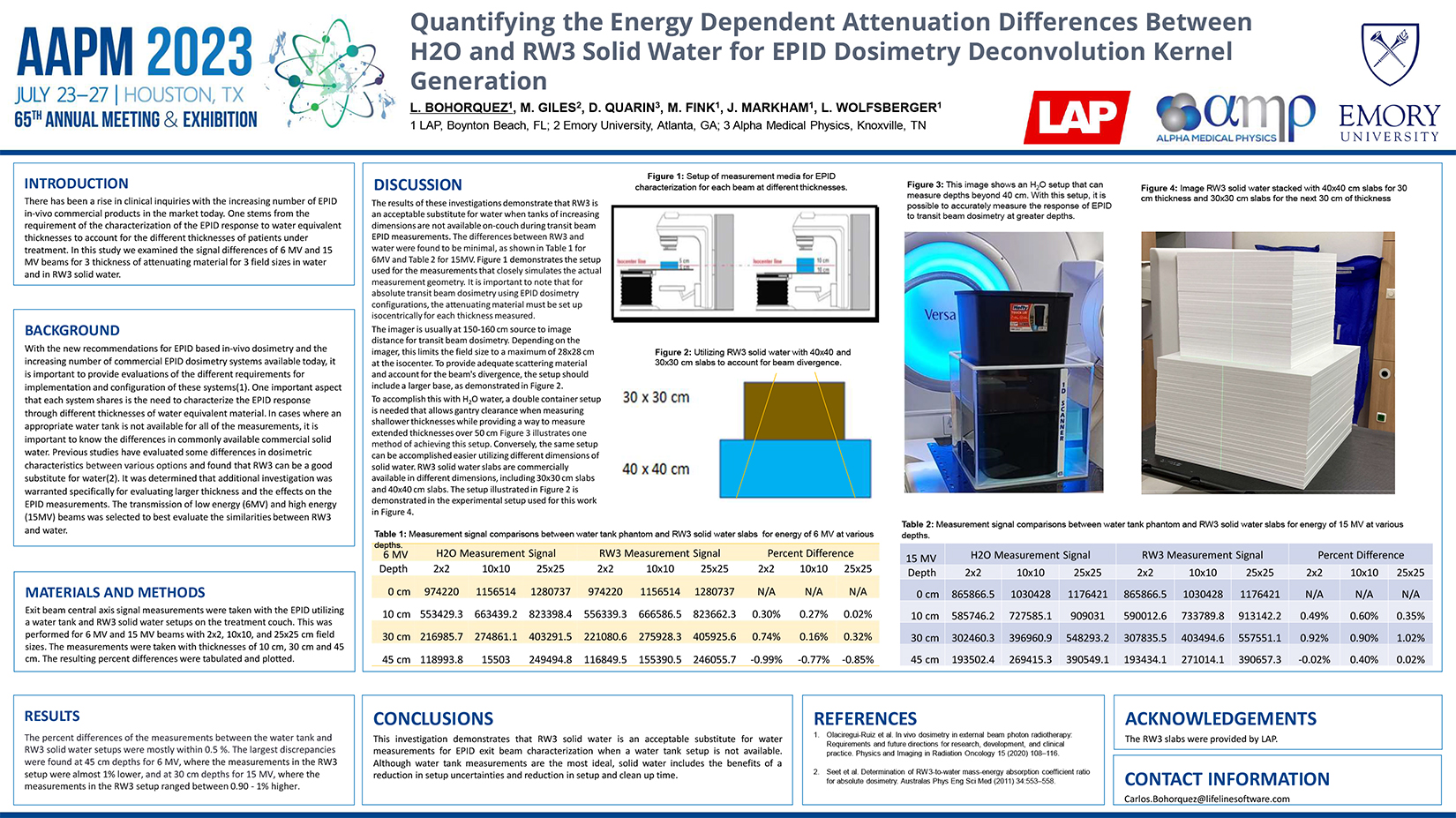Quantifying the Energy Dependent Attenuation Differences Between H2O and RW3 Solid Water for EPID Dosimetry Deconvolutional Kernel Generation
Background
With the new recommendations for EPID-based in-vivo dosimetry and the increasing number of commercial EPID dosimetry systems available today, it is important to provide evaluations of the different requirements for the implementation and configuration of these systems. One important aspect that each system shares is the need to characterize the EPID response through different thicknesses of water-equivalent material. In cases where an
appropriate water tank is not available for all of the measurements, it is important to know the differences in commonly available commercial solid water. Previous studies have evaluated some differences in dosimetric characteristics between various options and found that RW3 can be a good substitute for water. It was determined that additional investigation was warranted specifically for evaluating larger thickness and the effects on the
EPID measurements. The transmission of low energy (6MV) and high energy (15MV) beams was selected to best evaluate the similarities between RW3 and water.
Materials and methods
Exit beam central axis signal measurements were taken with the EPID utilizing a water tank and RW3 solid water setups on the treatment couch. This was performed for 6 MV and 15 MV beams with 2x2, 10x10, and 25x25 cm field sizes. The measurements were taken with thicknesses of 10 cm, 30 cm and 45 cm. The resulting percent differences were tabulated and plotted.
Results
The percent differences in the measurements between the water tank and RW3 solid water setups were mostly within 0.5 %. The largest discrepancies were found at 45 cm depths for 6 MV, where the measurements in the RW3 setup were almost 1% lower, and at 30 cm depths for 15 MV, where the measurements in the RW3 setup ranged between 0.90 - 1% higher.
Conclusions
This investigation demonstrates that RW3 solid water is an acceptable substitute for water measurements for EPID exit beam characterization when a water tank setup is not available. Although water tank measurements are the most ideal, solid water includes the benefits of a reduction in setup uncertainties and reduction in setup and clean up time.

